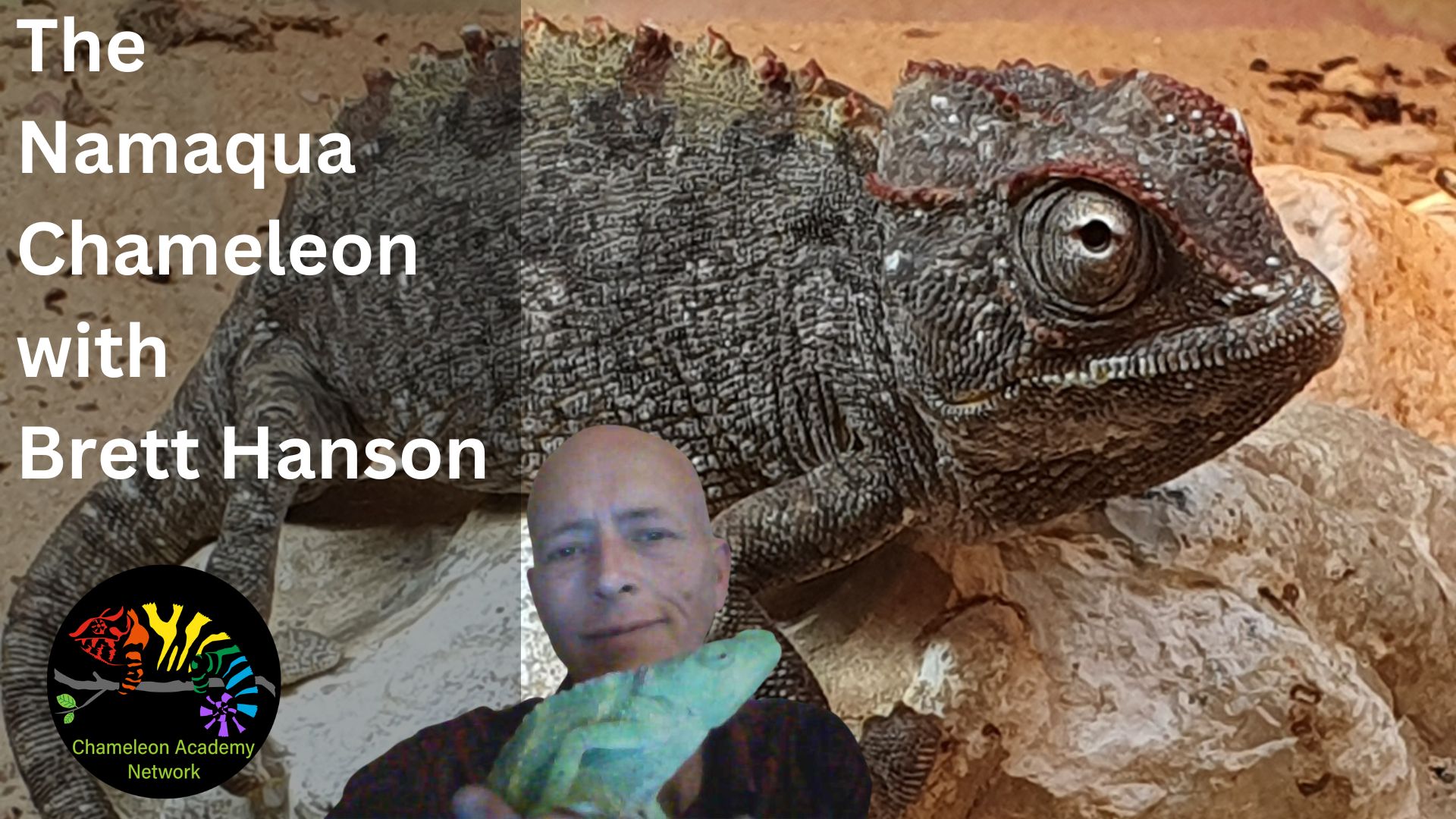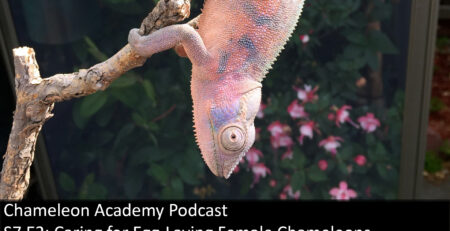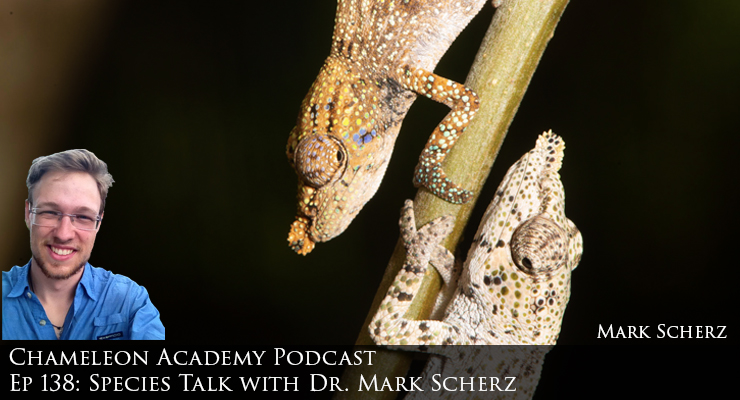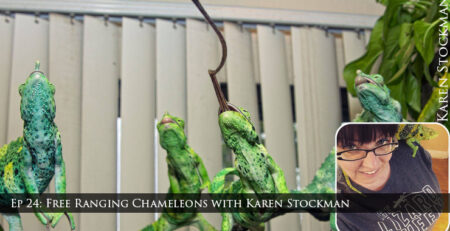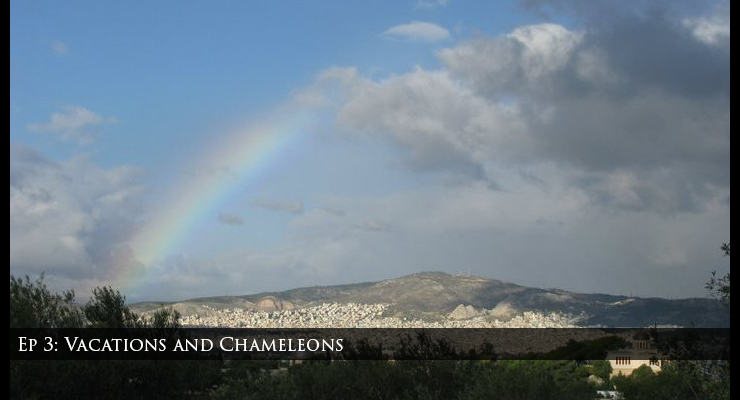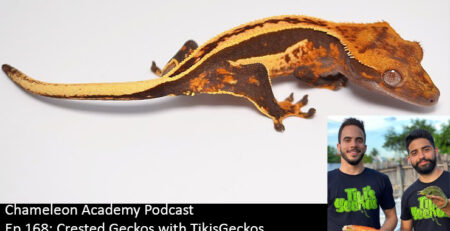The Namaqua Chameleon
Of the more than 200 species of chameleons, none breaks the mold like the Namaqua chameleon. They don’t climb and they run across sand dunes. Brett Hanson shares what it is like working with and reproducing Chamaeleo namaquensis, the Namaqua Chameleon.
Podcast Player
An Introduction to this interview
This interview represents one of the first introductions of the Namaqua Chameleon to the general chameleon community. This species has been quietly bred to multiple generations in Europe, though the numbers are only now starting to get to the point where they are being made available to community members outside of the breeder inner circles. Although that may sound elitist, it is merely the way breeding is done. The first generation is dispersed to highly experienced members of the community and only when a strong base of breeders has been established does the species break into the general market.
Chamaeleo namaquensis has been a dream species for many of us. It is the chameleon that is the least chameleon like despite the classic appearance. And I am happy to be able to share this interview with you. The images below are all from Brett Hanson and show his experiences with the species.
Interview quotes for the Namaqua Chameleon
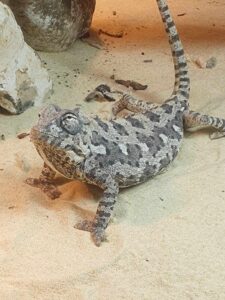
Image Courtesy of Brett Hanson
A chameleon on the desert floor
The Namaqua chameleons have adapted to living on the desert floor. They have the same fused toes as other chameleons have and they spread their feet out and they can actually run. They’re the only chameleon that can run and they can run fast. What they can’t do is climb. They can’t climb at all. They can’t close the feet like other chameleons can to grip on branches. They don’t have that ability, but they do like to scramble up on the rocks there at night to be off the ground just a little bit. And they’re very clumsy and they fall off.
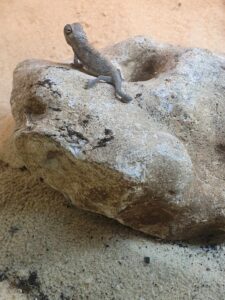
Image Courtesy of Brett Hanson
What does a desert chameleon's day look like?
They tend not to be active when the sun’s at its highest point because it’s just too hot. They tend to sit around then and wait till it goes down a little bit and cooler. And then they’ll be on the hunt again. They’re constantly hunting. They do not stop looking for the next meal. And they’re very greedy. They can eat prey bigger than you could imagine. And the younger are just the same. You think there’s no way he can eat that, and they do. They do. Fabulous animals to watch.
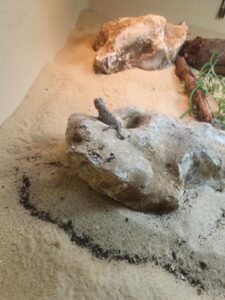
Image Courtesy of Brett Hanson
Q: What is the personality of the Namaqua Chameleon?
They are scared of nothing. The only way you can describe them is they’re like little baby rhinos charging round. Anything gets in the way, they just shove it out the way. I’ve got the youngsters in one tank at the moment, but the adults you cannot keep together whatsoever. Whatsoever, they’re so aggressive, they rip each other to pieces,

Image Courtesy of Brett Hanson
How do Namaqua Chameleons deal with being held?
Indifferent, Bill. Very indifferent. They don’t seem to be bothered at all. They certainly don’t get stressed, which a lot of chameleons do get stressed. They don’t want you anywhere near them. They’re not bothered, Bill. They’re not bothered. Once you’ve got them on your hand, they sit there until they decide they want to clear off and go hunting again. I don’t handle mine a lot, Bill. I like to watch them more than handling them. It’s all about watching them.

